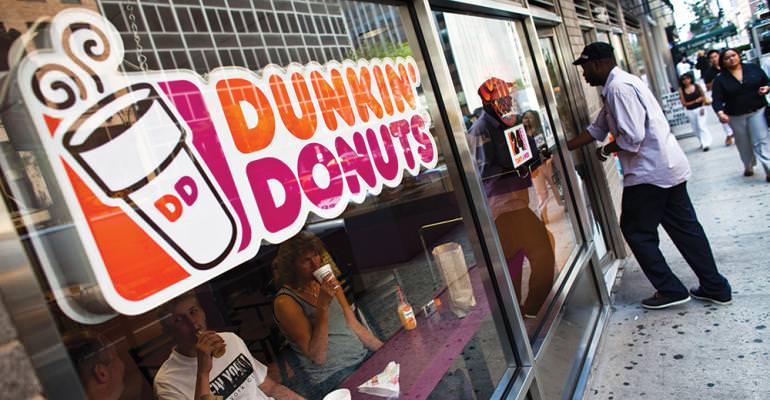Dunkin’ Donuts recently announced that it was considering dropping ‘Donuts’ from its name in selected stores. A Pasadena, California location is to be the first with the Dunkin’ only branding. This new naming will highlight that there is more to the brand than the products it’s well-known for, according to a spokesperson.
“While we remain the number one retailer of donuts in the country, as part of our efforts to reinforce that Dunkin’ Donuts is a beverage-led brand and coffee leader, we will be testing signage in a few locations that refer to the brand simply as “Dunkin’,” according to a company statement. “We have been referring to ourselves simply as Dunkin’ in our advertising for more than a decade, ever since we introduced our ‘America Runs on Dunkin’ campaign.”
Is this a smart move?
Identity, meaning, and recognition are the most powerful elements of a brand name. A great name tags a brand’s character. You know what to expect from the way the brand identifies itself. Casual, credible, functional … great names capture the nature of what they describe. Powerful brand names also hint at hidden meaning. Sometimes, they carry within them the synopsis of a story. And of course, names provide us with cues as consumers. We recognize them. They give us something to ask for, and something to look for.
So if the Dunkin Donuts name already has a clear personality why would the company look at changing it? It means a lot to plenty of people and it’s very recognized. There are arguments for and against such a move. Coca Cola changed to Coke, and Starbucks dropped Coffee from its’ name. But when Pizza Hut tried to become “The Hut” it reverted under public pressure. Consumers dismissed the initiative as an unfashionable attempt to be fashionable.
So when should a brand look at changing its name? If you want to signal a change in strategic focus, and if the name change will serve greater meaning, resonance, and value for consumers and customers, then do it.
Let’s apply those three criteria to Dunkin’ Donuts proposed name change: Does “Dunkin’” as a name carry greater value than the original? Yeah, sure, it gets around the recognition issue in that half the original name is there. And since people want minimalism and simplicity, it could bring greater resonance to a market where it’s harder and harder to stand out.
As for the third criteria, only time will tell whether consumers see enhanced value in the abbreviated version. After all, the company is currently the undisputed leader in the donut industry with a greater than 60% market share and a presence that runs to 11,300 restaurants globally.
What’s the biggest risk here? Messing with the brand essence too much confuses customers. You put doubt in the consumer’s mind as you force them to ask if that new brand is still the same product they used to buy or a completely new product. This changes consumer expectations erodes the hard-earned reputation and can result in a drop in sales due to the confusion you as a brand owner create.
Here is the real question: what benefit will shoppers get from the Dunkin’ brand that they don’t get from Dunkin’ Donuts? In terms of association and experience, is anything going to be different? If not (the company has talked about rolling out a new image, with emphasis on beverages and leadership in coffee), then what exactly does the change signal?
Every change you make to your brand is a signal to the market that things will not be as they were. What Dunkin’ Donuts seems to be signaling though is a shift that could feel like a brand looking to keep up with the times. People may like that, and welcome it. Or they may not. Because they may see value in it happening, or they may perceive no important difference—in which case they might prefer that things stay as they are.




